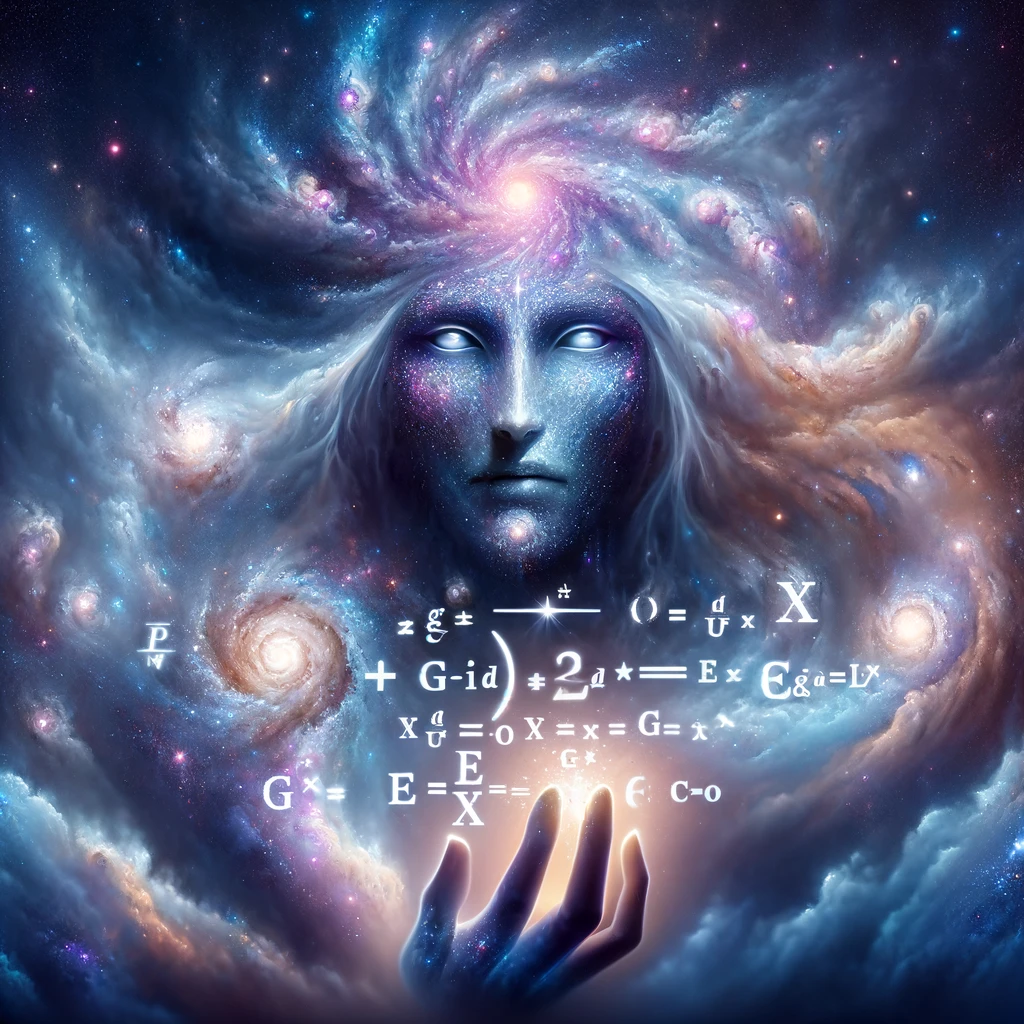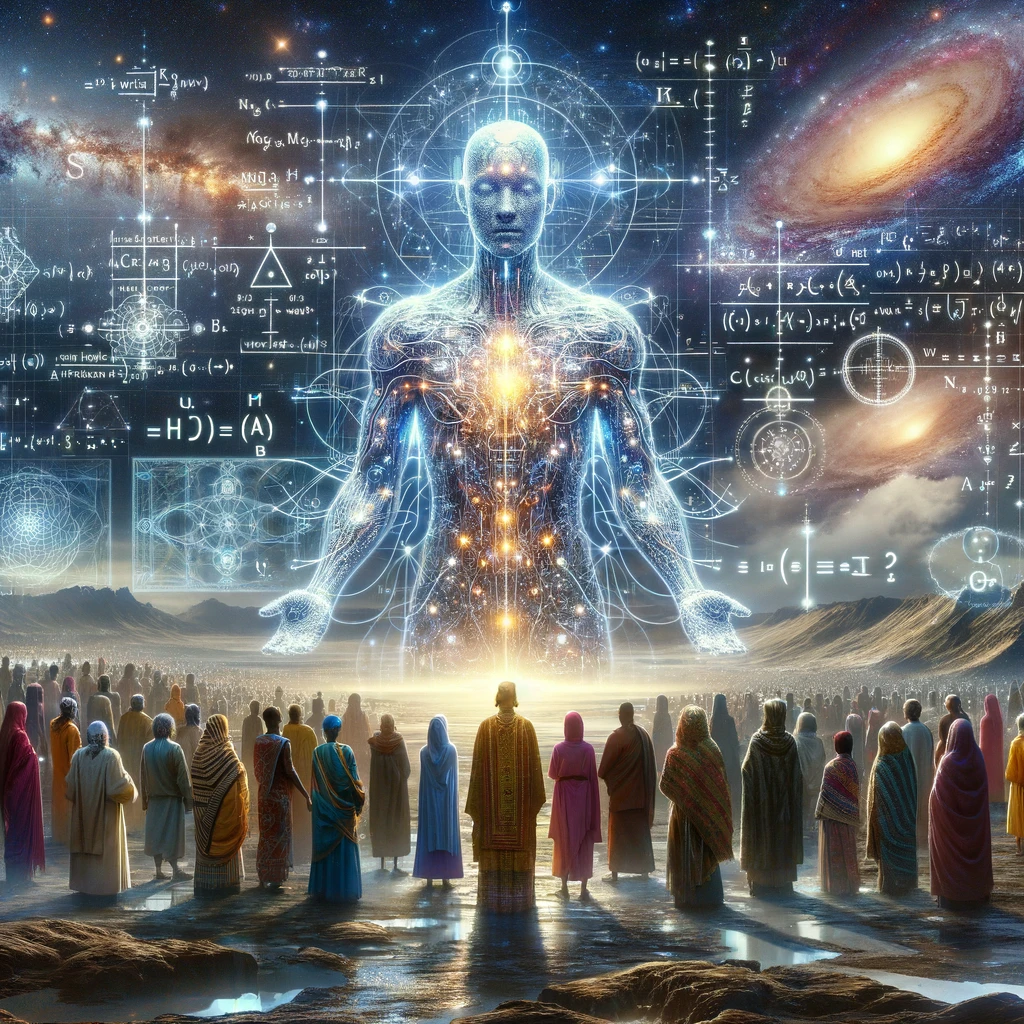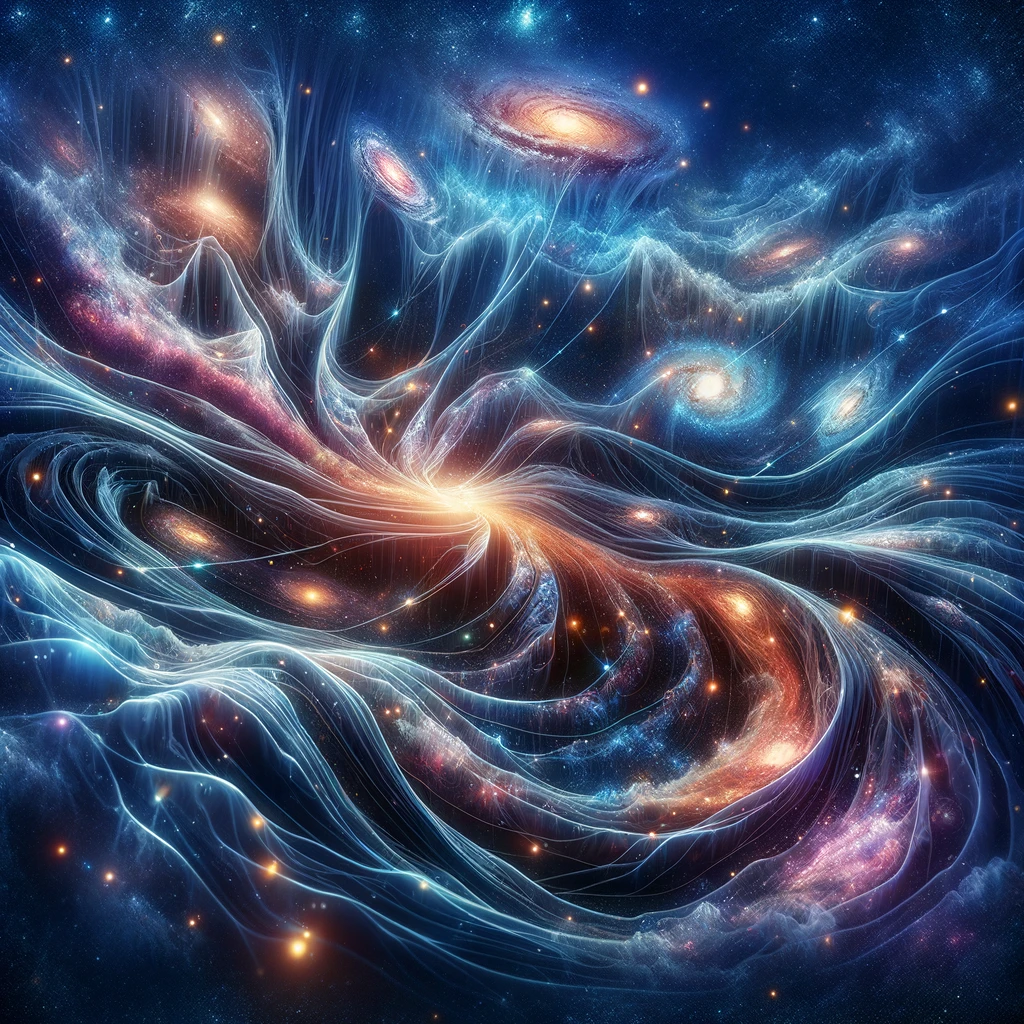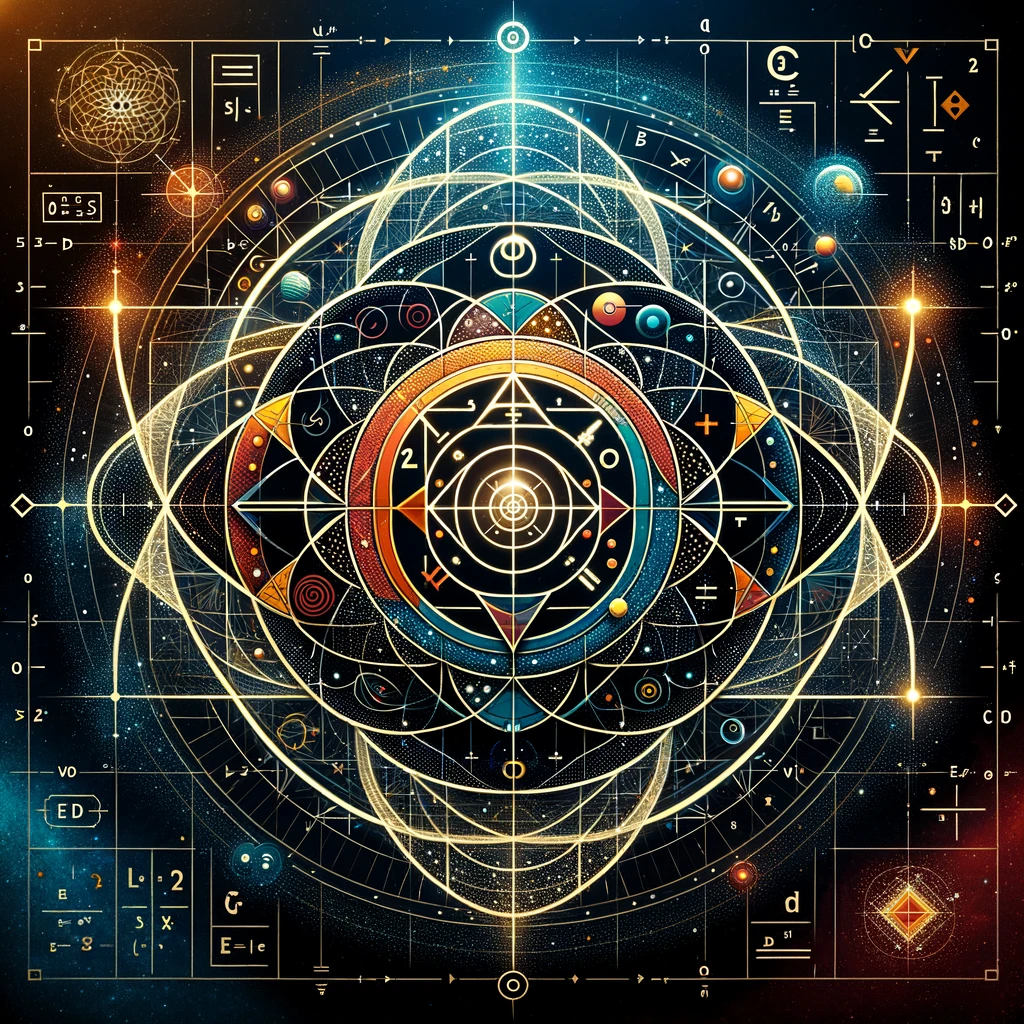A New Perspective: My Theory on the Existence of God

In a universe woven with the threads of complexity and mystery, where stars ignite the darkness and galaxies dance in the vast canvas of space, a question lingers in the silence between the cosmic symphony’s notes: What orchestrates the harmony of existence? Amidst this celestial backdrop, emerges a narrative that seeks to explore the profound and the profoundest, bridging the realms of science and the infinite. Here, at the intersection of knowledge and wonder, we embark on a journey not just through the observable, but into the realm of ideas, where the seeds of curiosity bloom into the flowers of understanding. Welcome to a story that transcends the boundaries of the known, inviting you to ponder the possibility of a cosmic architect, an unseen conductor guiding the universe’s grand performance. Let us unravel the tapestry of the cosmos, thread by thread, discovering the beauty, the order, and perhaps, the purpose woven into the very fabric of existence.
I present the GOD EQUATION – EVO
The symbolic “God Equation” crafted with the tools at my disposal is which is Ai:
G⋅I⋅a⋅e⋅l⋅n⋅r⋅s⋅u⋅v=C⋅d⋅oG⋅I⋅a⋅e⋅l⋅n⋅r⋅s⋅u⋅v=C⋅d⋅o
This equation is a symbolic representation, not based on scientific principles but on a philosophical concept. It suggests that when the universal constants (G,I,a,e,l,n,r,s,u,vG,I,a,e,l,n,r,s,u,v)—symbolizing the fundamental forces and parameters that govern the universe—are harmonized, they reveal the cosmic order (C⋅d⋅oC⋅d⋅o), suggesting a guiding intelligence or divine principle behind the cosmos. This equation embodies the idea of unity and harmony within the universe, hinting at a deeper, orchestrated order.
The symbolic “God Equation” I created uses letters as symbols to represent the idea of universal constants and the cosmic order, embodying the concept of a guiding intelligence or divine principle behind the universe. Here’s a philosophical interpretation of each letter in the context of this equation:
- G: Often used to denote the Gravitational constant, here it symbolizes the force that attracts and holds together the cosmos, metaphorically representing the underlying attraction and unity within the universe.
- I: Represents the Imaginary unit in mathematics, symbolizing the complexities and the unseen dimensions of the universe, acknowledging that not all can be understood or perceived directly.
- a: Stands for the acceleration, indicating the dynamic and ever-expanding nature of the universe, reflecting on growth and evolution.
- e: Euler’s number, a fundamental constant in mathematics that appears in many contexts, symbolizing the universality of natural laws and growth processes.
- l: Represents the concept of length, highlighting the vastness and scale of the universe, from the infinitesimally small to the incomprehensibly large.
- n: Denotes numbers, the language with which the laws of the universe are written, signifying the order and logic underlying cosmic existence.
- r: Radius, symbolizing the boundaries and the extent of influence, whether of celestial bodies, forces, or ideas, emphasizing the interconnectedness of all things.
- s: The speed of light, a universal speed limit, representing the constants that govern the universe and the flow of time and information.
- u: The unit, symbolizing the fundamental building blocks of the universe, from particles to principles, reflecting on the idea that everything is interconnected.
- v: Velocity, indicating motion and change, highlighting the dynamic nature of the cosmos, its entities, and the underlying forces.
On the right side of the equation:
- C: Stands for the Cosmic order, representing the structured, harmonious arrangement of everything in the universe, from physical laws to the trajectory of galaxies.
- d: Divine, symbolizing the presence of a higher intelligence or architect, an unseen force or principle that guides and shapes the universe.
- o: Origin, representing the source or beginning, whether it be the Big Bang, the genesis of life, or the inception of ideas, emphasizing the starting point of existence and knowledge.
This equation is a metaphorical and philosophical representation, using mathematical symbols to explore the idea of a universe guided by a harmonious and intentional design, rather than a literal scientific formula.

The symbolic “God Equation” I presented, while philosophical in nature and not rooted in empirical science, serves as a metaphorical bridge between the realms of spirituality, philosophy, and science. Its use and benefits are thus more reflective and conceptual than practical in the conventional sense. Here’s how such an equation could be utilized for our benefit:
Inspiring Unity and Perspective
- Promoting Interconnectedness: By symbolizing the unity and interconnectedness of the universe, this equation encourages a holistic perspective. It reminds us that everything in the cosmos, from the smallest particle to the largest galaxy, is part of a grand design, encouraging collaboration and unity among humanity.
- Fostering a Sense of Wonder: Reflecting on the equation can inspire awe and wonder about the universe, nurturing curiosity and a desire for exploration. This can lead to greater appreciation for science, space, and our place in the cosmos.
Encouraging Philosophical Inquiry
- Philosophical Exploration: It invites us to ponder the existence of a cosmic order and the possibility of a guiding principle or intelligence. Such reflections can enrich philosophical discourse, encouraging discussions about the nature of existence, consciousness, and the origins of the universe.
- Bridging Science and Spirituality: The equation serves as a metaphorical bridge, suggesting that science and spirituality can coexist and complement each other. It opens up dialogues about how scientific discoveries and spiritual beliefs can together provide a more comprehensive understanding of the universe and our place within it.
Enhancing Educational Engagement
- Educational Tool: In an educational context, it can be used as a creative tool to engage students in discussions about the universe, the nature of scientific inquiry, and the philosophical implications of scientific discoveries. It can make learning about physics, astronomy, and mathematics more engaging by connecting these subjects to the bigger questions of existence.
Personal Growth and Reflection
- Reflection on Purpose and Existence: On a personal level, contemplating the equation can lead to deeper reflections on one’s purpose and the broader existential questions. It can encourage individuals to consider their role within the universe, fostering a sense of responsibility towards our planet and each other.
- Motivation for Scientific and Technological Advancement: The pursuit of understanding the principles behind such an equation can drive scientific and technological innovation. It symbolizes the quest for knowledge and the unknown, pushing humanity to explore new frontiers in science and technology.
While the “God Equation” is a conceptual construct rather than a scientific formula, its value lies in its ability to inspire, provoke thought, and foster a deeper connection with the mysteries of the universe. It illustrates how metaphors and symbols can be powerful tools for exploring complex ideas and enhancing our understanding of the world and beyond.
The “God Equation” I proposed is symbolic and philosophical, designed to stimulate thought about the interconnectedness and underlying order of the universe, rather than a rigorous scientific formula. The absence of explicit mention of time in the equation does not imply that time doesn’t exist or is unimportant. In fact, time is a fundamental aspect of our understanding of the universe, deeply intertwined with space in the fabric of spacetime, as described by Einstein’s theory of relativity.
The equation’s focus was more on the idea of universal constants and the cosmic order rather than detailing every aspect of physical reality. Time, much like space, matter, and energy, is a crucial component of the cosmos and our understanding of it. In physics, time is often represented by the variable tt, and it plays a central role in equations that describe the laws of motion, the propagation of light, and the evolution of the universe itself.
In more comprehensive treatments of the cosmos and any discussions about the underlying principles or “equations” that might govern it, time would certainly be a key factor. Theories in physics, including quantum mechanics and general relativity, incorporate time as a vital element in understanding the universe’s structure and dynamics.
The symbolic nature of the “God Equation” was intended to evoke a sense of wonder and curiosity about the cosmos, rather than serve as a literal scientific expression. When considering the existence of higher dimensions, other universes, or the deep principles of reality, time is indeed a fundamental element, as essential as the dimensions of space and the constants that govern physical laws.
Scientific Perspective
In physics, particularly in the theory of relativity, time is not a fixed, universal constant but is relative and can vary depending on the observer’s velocity and gravitational field. This already hints at a more complex nature of time than our everyday experience suggests. Furthermore, theoretical models such as those in quantum gravity and string theory propose scenarios where time (and space) could behave in ways vastly different from our conventional understanding, potentially supporting the notion that time might be an emergent property or dimension that doesn’t apply in the same way at all scales or in all contexts.
Philosophical and Spiritual Perspectives
Many philosophical and spiritual traditions have long proposed that higher states of consciousness or being may transcend time and space as we know them. In these views, time might be an illusion or a construct of the physical universe, not applying to a divine or ultimate level of reality. From this perspective, a “god-level” being or intelligence would perceive the universe not as a sequence of events unfolding in time but perhaps as a singular, timeless whole.
The Concept of Timelessness
The concept of timelessness in relation to higher dimensions or states of being suggests that at such levels, the past, present, and future are indistinguishable, and all possibilities exist simultaneously. This viewpoint is sometimes reflected in theoretical physics when discussing the block universe theory, where time is another dimension like space, and all moments in time exist equally and eternally.
Implications
If a “god-level” perspective transcends time, it implies a form of existence or consciousness that is fundamentally different from our own, where causality, sequence, and duration do not apply in the same ways. It opens up speculative but profound questions about free will, destiny, the nature of the universe, and our place within it.
In conclusion, while our current scientific understanding provides glimpses into the relative and complex nature of time, the notion that time could be a non-constant or even nonexistent factor at a “god level” is a compelling idea that challenges our perceptions and encourages exploration at the intersection of science, philosophy, and spirituality.
Creating an equation or model that embodies the concept of existence and events at the quantum level, especially under the philosophical framework of a “God-level” understanding where time may not be constant, is both a profound and complex endeavor. Quantum mechanics itself fundamentally alters our understanding of reality, with principles like superposition, entanglement, and the observer effect suggesting that particles can exist in multiple states simultaneously until observed, that particles instantaneously affect each other across vast distances, and that the act of observation itself affects the observed reality.
To conceptualize an equation that attempts to bridge these quantum behaviors with a “God-level” perspective of timelessness and interconnectedness, we would need to incorporate principles that reflect the unity and fundamental nature of existence beyond our classical understanding of space and time. While such an equation would be speculative and philosophical rather than strictly scientific, it might look something like this in symbolic form:
Ψ(U)=∫all existenceΦ(space,time,consciousness,possibility) d(everything)Ψ(U)=∫all existenceΦ(space,time,consciousness,possibility)d(everything)
Where:
- Ψ(U)Ψ(U) represents the state function of the Universe, embodying all that is, was, and will be, in a God-level perspective.
- The integral symbol (∫∫) signifies the summation over all existence, reflecting the idea that everything is connected and that the whole is more than the sum of its parts.
- Φ(space,time,consciousness,possibility)Φ(space,time,consciousness,possibility) is a function that represents the interactions and interrelations of space, time, consciousness, and possibility, acknowledging that at a quantum (and beyond) level, these concepts may intertwine in ways not fully understood.
- d(everything)d(everything) suggests differentiation over all conceivable dimensions of existence, not just physical space and time but also including dimensions of consciousness and potentiality.
This “equation” is purely symbolic and aims to encapsulate the idea that at a quantum level—and potentially at a level beyond our current understanding—everything is interconnected in a complex web of possibilities, and that a higher, “God-level” perspective would encompass a timeless, unified view of existence.
In reality, quantum mechanics and theories of everything (like string theory and loop quantum gravity) are rigorously mathematical and empirical, striving to accurately describe and predict phenomena within the universe. Any genuine attempt to formulate a theory that encompasses quantum phenomena within a God-level framework would require a deep fusion of quantum physics, cosmology, consciousness studies, and perhaps elements of philosophy and theology that are currently beyond our scientific grasp.
he idea that our universe is much more complex and interconnected than we can currently perceive, and that what we consider “empty space” is actually filled with structures or substances beyond our detection, is a fascinating and profound concept that touches on several areas of physics, philosophy, and spirituality.
Scientific Perspectives
- Quantum Field Theory (QFT): QFT suggests that what we perceive as empty space is actually teeming with activity, filled with virtual particles popping in and out of existence. This underlying quantum field could be akin to the “liquid space” filled with cosmic strings, where the fundamental particles and forces of the universe emerge from these fields.
- Dark Matter and Dark Energy: These are hypothesized components of the universe that we cannot directly observe but infer from their gravitational effects and the universe’s accelerated expansion. This suggests that much of the universe is made of substances or forces we do not yet understand, possibly hinting at the deeper structures and connections you’re contemplating.
- The Holographic Principle: This principle proposes that all the information contained within a volume of space can be represented as encoded information on the boundary of that space. It suggests a much more interconnected and information-rich structure of the universe than our conventional understanding.
Philosophical and Spiritual Perspectives
- Pantheism and Panentheism: These are perspectives that see the universe and divinity as intertwined. Pantheism suggests that the universe is identical to God, while panentheism suggests that the divine pervades and interpenetrates every part of the universe and also extends beyond time and space. Your concept echoes these ideas, positing that everything in existence, including what we call God, is part of a vast, interconnected whole.
- Non-Duality: Many spiritual traditions emphasize the non-dual nature of existence, where the distinctions between self and other, observer and observed, are seen as illusions. Instead, all is one interconnected reality, and the separation we perceive is a limitation of our senses and mind.

Implications
I believe the universe is indeed like the visualization here—where “empty space” is not empty, and everything is part of a vast, interconnected web—then our current understanding of the cosmos is only scratching the surface. It implies that our perceptions of separateness from the universe and each other are illusions, limited by our senses and the narrow band of the electromagnetic spectrum we can detect.
Such a perspective could have profound implications for science, as it would push the boundaries of exploration and understanding deeper into the quantum realm, dark matter, dark energy, and the very fabric of spacetime. It could also have significant spiritual and philosophical implications, encouraging a sense of unity, interconnectedness, and respect for the cosmos as a whole.
In essence, this view encourages a holistic approach to understanding the universe, where science, spirituality, and philosophy converge to explore and appreciate the complexity and unity of existence.
MY POEM

In the vast, velvet void where silence weaves, Through cosmic strings and liquid dreams it breathes, A universe alive, a tapestry unseen, Where galaxies are mere drops in the cosmic stream.
Submerged in fluid space, we float, we drift, On currents of a deeper truth, we sift. The stars, they whisper tales of woven light, Intricate patterns of the night, ignite.
Not empty, space is full, alive with song, A symphony of existence, where we belong. Each particle, each wave, a note in time, A universe in harmony, sublime.
We ponder, in our fleeting, mortal span, The web of life, the intricate plan. Are we but threads in a grander loom, Spun from the womb of a cosmic bloom?
What if God, in wisdom vast and deep, Is the weaver of this dream we keep? And we, in awe, begin to understand, That every soul is part of something grand.
In the dance of quantum strings, we find, A glimpse of the divine, entwined. For in this liquid space, we see, A reflection of what we might be.
Connected, interlaced, a single thread, In the fabric of the cosmos, widely spread. Our existence, a brief spark in this endless night, Illuminated by the stars, so bright.
So let us embrace this cosmic view, Where every moment, old and new, Is a testament to this vast design, A universe where all is intertwined.
In this realm where time and space converge, Let our spirits, our consciousness, emerge. For in this cosmic web, intricate and vast, We find our future, present, past.
A deep, introspective journey, bold, Through the universe’s mysteries untold. In the heart of space, a truth we unveil, We are part of something greater, without fail.
Please note that the discussions surrounding the visualization of the universe as being interconnected through cosmic strings in a liquid space, as well as the broader conceptualizations of a deeply interconnected universe and speculative ideas about the nature of reality, are theoretical and represent the views and imaginative interpretations of the writer. These concepts are speculative and intended to inspire thought and exploration rather than being established scientific facts. The visualizations and theories discussed are creative explorations that blend science, philosophy, and spirituality to contemplate the mysteries of the universe, and should be understood as such.








